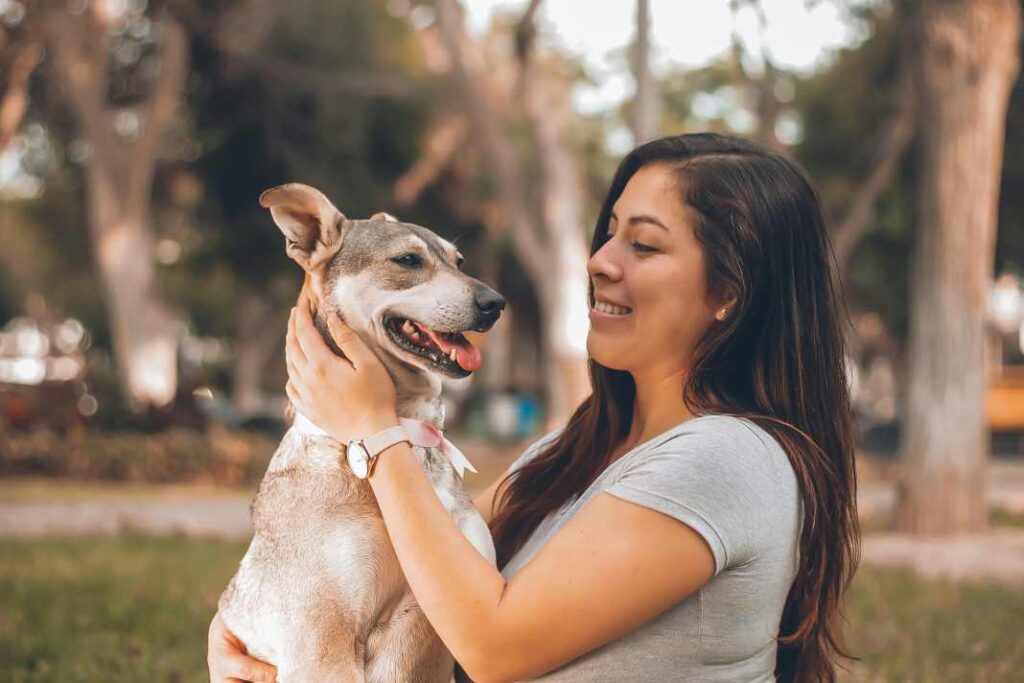Navigating the Teenage Phase: Training Adolescent Dogs – Understanding the behavioral shifts and common issues in adolescent dogs, along with training tips, techniques, and the importance of consistency and positive reinforcement during this rebellious stage.
Click here for Expert Videos to Stop Dog Behavioral Problems!
Understanding the Teenage Phase in Dogs
Adolescent dogs, much like human teenagers, go through a period of significant change that can impact their behavior and relationship with their owners. This phase typically starts around six months of age and can last until the dog’s teenage phase is two years old, with smaller breeds often maturing more quickly than their larger counterparts.
During this time, dogs experience hormonal changes and a reorganization of their brains, which contributes to their decreased obedience and increased curiosity. For example, a previously well-behaved puppy might suddenly start ignoring commands they once followed, a clear sign of the teenage phase setting in.
Understanding these changes is crucial for owners to maintain patience and adapt their training strategies. It’s important to remember that this phase is temporary and that with the right approach, you can help your dog navigate through it successfully.
The key is to recognize that your adolescent dog isn’t being deliberately disobedient but is instead trying to explore and understand their environment with their newfound sense of independence.

Common Behavior Issues During Adolescence
Adolescent dogs may exhibit a range of behavior issues, including a relapse in basic obedience skills, bossiness towards other dogs, and increased frustration. For instance, an adolescent dog who had previously mastered the “sit” command might suddenly act as if they’ve never heard the command before.
Additionally, frustration in adolescent dogs can lead to negative behaviors such as excessive barking and aggression, making it essential for owners to engage them in structured play and exercise to address their physical and behavioral needs.
Seeking professional help becomes essential if these behavioral issues persist or worsen, as they could indicate underlying health concerns. For example, if an adolescent dog shows unexplained aggression or a severe decline in obedience, a consultation with a veterinarian or a professional dog trainer could provide insights into the root cause of these issues and offer tailored strategies for improvement.
Training Tips and Techniques for Adolescent Dogs
Navigating the challenges of training an adolescent dog requires a mix of patience, consistency, and appropriate training techniques. Enrolling in training classes or engaging in activities that provide mental stimulation can reinforce positive behaviors.
Maintaining basic obedience training through short, engaging sessions can keep adolescent dogs focused and cooperative, helping to counteract their tendency towards stubbornness.
Socialization during this stage is also crucial, as it can prevent conflicts and aggressive behavior when interacting with other dogs. A practical example of this could be participating in group training sessions or doggy playdates, which allow adolescent dogs to interact with their peers in a controlled environment, thus building their confidence and improving their social skills.

Importance of Consistency and Positive Reinforcement
Consistency in training practices forms the backbone of successfully navigating the adolescent phase. Using high-value treats and a long line lead can be particularly effective in reinforcing recall commands, which adolescent dogs often struggle with. Moreover, building a strong, positive relationship with your adolescent dog involves understanding their needs and providing consistent guidance and support.
Positive reinforcement, such as rewarding good behavior with treats or praise, plays a vital role in adolescent dog training. By focusing on rewarding the behaviors you want to encourage, rather than punishing undesirable ones, you can foster a learning environment where your dog feels motivated to cooperate.
Managing the Rebellious Stage in Adolescent Dogs
The rebellious stage in adolescent dogs can be managed by providing them with tasks that channel their energy positively and reinforce obedience training through fun and engaging activities. For instance, games like hide and seek or scent training not only keep adolescent dogs mentally stimulated but also help reduce stubbornness by giving them a productive outlet for their energy.
Staying upbeat and using distraction techniques can also help adolescent dogs overcome unexpected fears and anxieties, ensuring they continue to progress in their training without becoming overwhelmed by their environment.

Seeking Professional Help for Behavioral Issues
If an adolescent dog exhibits persistent aggressive behaviors or a severe decline in obedience, it may indicate the need for professional intervention. Consulting with a veterinarian can help rule out any medical issues contributing to the behavior problems, while a professional dog trainer or behaviorist can offer specialized guidance and support for managing challenging behaviors.
Training classes specifically designed for adolescent dogs can be particularly beneficial, as they provide targeted support that addresses the unique challenges of this developmental stage, reinforcing good behavior and strengthening the bond between you and your dog.
Family Unity in Dog Training: Ensuring Success Through Consistency

When it comes to dog training, the harmonious and consistent actions of all family members stand as pivotal elements of success. This collective endeavor goes beyond simple obedience, crafting a rich fabric of clear communication and mutual respect between the dog and its human family.
Continue reading: Ensuring Success Through Consistency
The Science of Dog Training: Reward-Based Training Methods Prevail

As we continue to learn from and adapt our training methods to align with scientific insights, the path forward is clear. Reward-based training, underscored by consistency, stands out as the most effective and compassionate approach to dog training, promising a future where dogs are not just trained but truly understood and respected.
Continue reading: Reward-Based Training Methods Prevail




